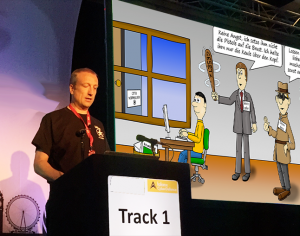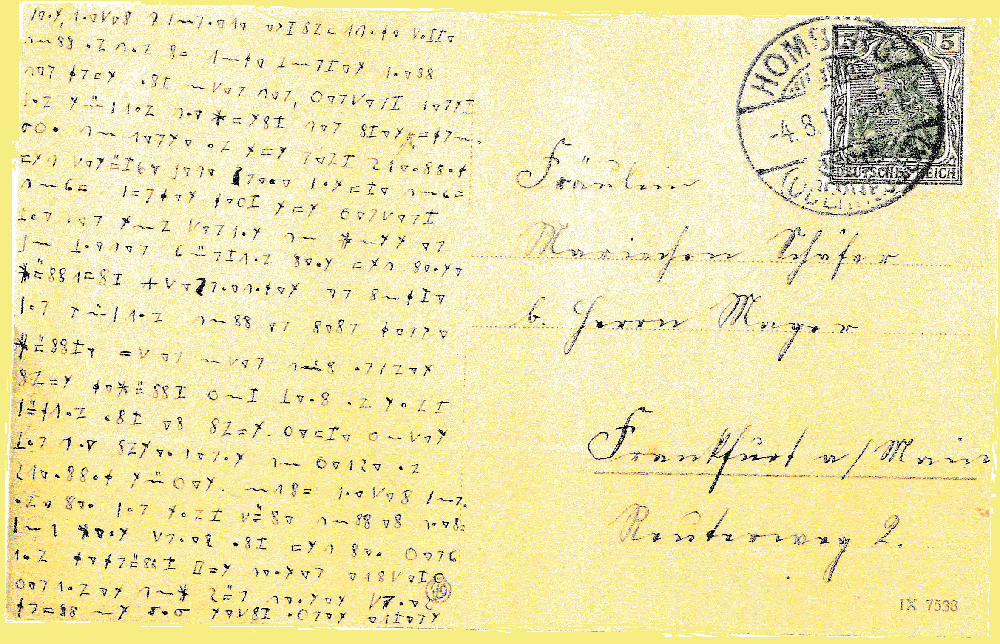About 110 years ago, a Mariechen Schäfer living in Frankfurt, Germany received an encrypted postcard. Can a reader solve it?
Let me first mention that I will give an online talk titled Cipher Machines before 1920 tomorrow (Saturday, May 30, 2020) at 6pm German time (1600 GMT). For my German readers, the overlapping with the Sportschau might be a problem, but as this is an international webinar, we couldn’t take account of this. My presentation will last about 45 minutes, afterwards there will be time for discussions.
The talk is organized by Bob Saltzman as an activity of the Crypto Collectors Group mailing list, but it is open for everybody. If you want to watch it, send me a mail, then I will forward you the login data. It’s free of charge.
An encrypted postcard
Last week, I received an e-mail from Erika Müller, who works as a volunteer for the town museum of Homberg (Ohm), a municipality located about 100 kilometers north of Frankfurt, Germany.
Frau Müller sent me a scan of an encrypted postcard the museum received from a collector. Here it is:
To my regret, I can’t read the last number of the date on the stamp. If it’s a 1, the card was stamped on August 4th, 1911.
The recipient was an unmarried woman (Fräulein) named Mariechen Schäfer, living in the Reuterweg 2 in Frankfurt. As it seems, this encrypted card was sent, like most others I know, by a young man to his lover. “Mariechen” is a variant of of the German name “Marie” or “Maria”.
Deciphering approaches
The encryption system used is apparently a simple substitution cipher (MASC).
The first two words of the message are probably MEIN LIEBES (“my dear), followed by MURIELE (probably derived from the recipient’s first name). The last word in the first line might be BITTE (“please”).
Can a reader find out more?
Follow @KlausSchmeh
Further reading: A postcard with an abbreviated message
Linkedin: https://www.linkedin.com/groups/13501820
Facebook: https://www.facebook.com/groups/763282653806483/





Kommentare (6)